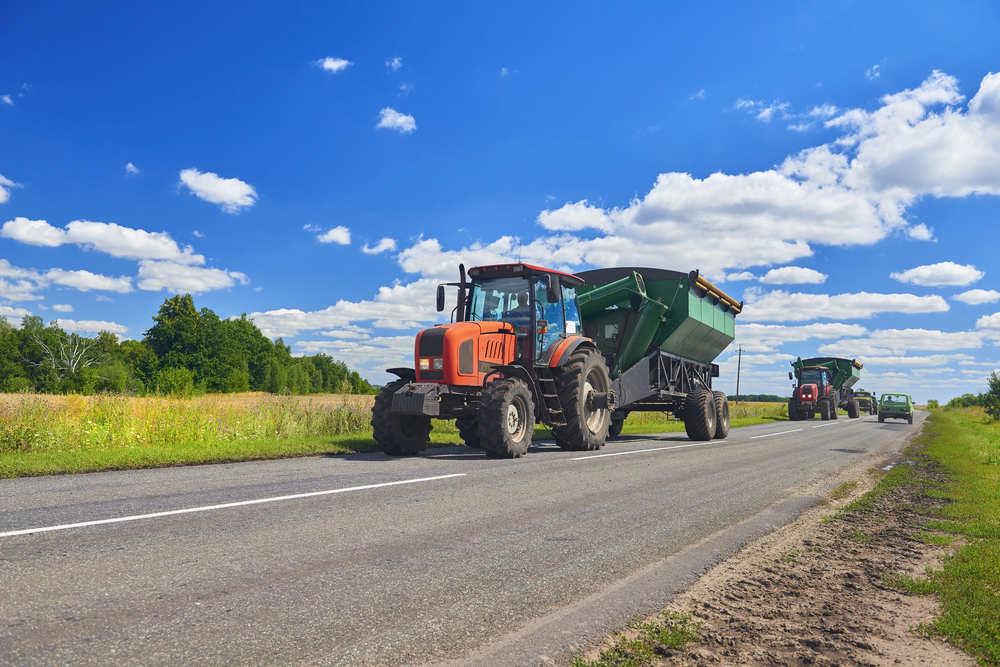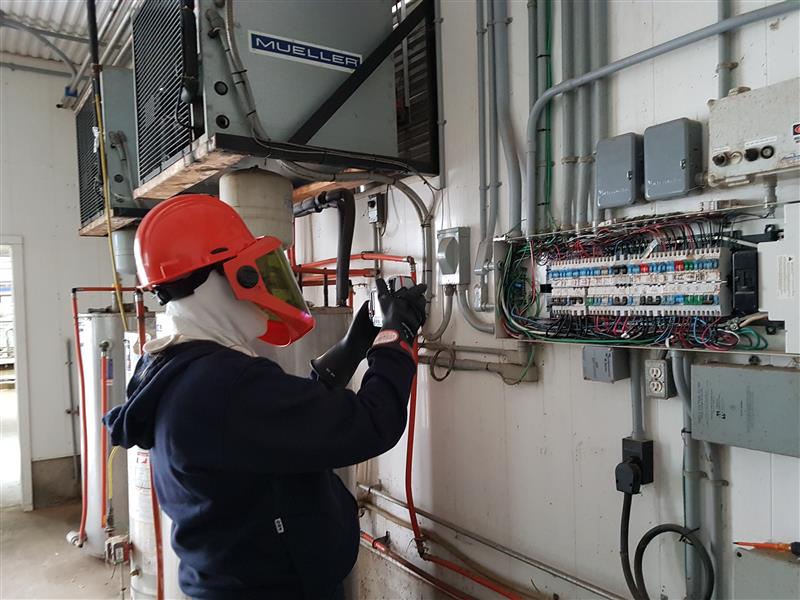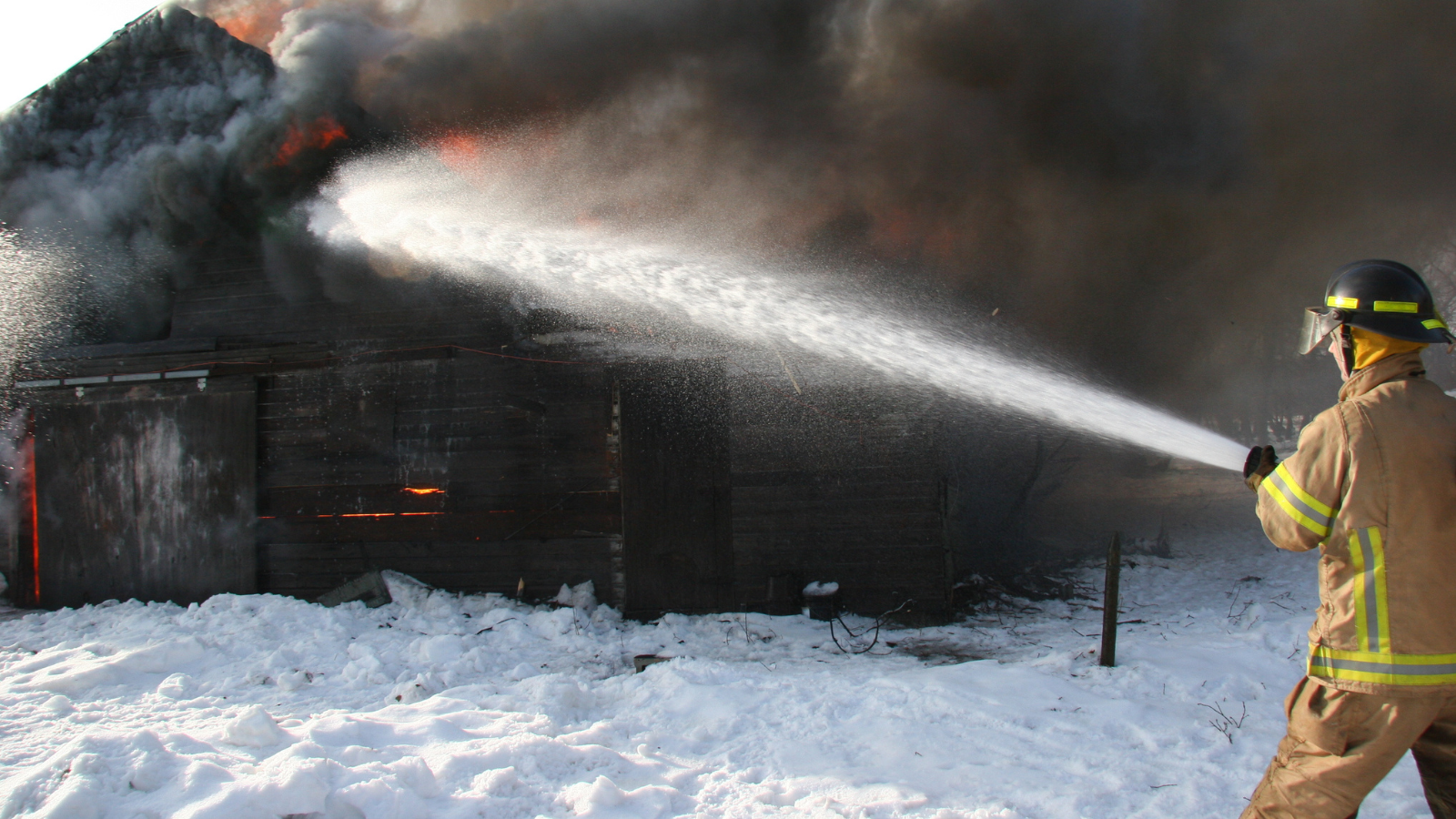During the busy harvest season, there are numerous farms that use public roads to move equipment around. Farm equipment is constantly changing, getting larger and more innovative in its uses and design. This equipment has helped increase efficiencies when farming and made many tasks much simpler to complete. Although farm equipment has improved the agricultural industry in many different ways, we can’t forget that these large pieces of equipment can be dangerous if not handled properly. As the harvest season gets into full swing, it’s important to remember the rules of the road to keep everyone safe.
Drivers License
In Ontario, there is no age restriction on driving farm equipment on private property. However, it is the adult’s responsibility to ensure that the youth are not doing work that is outside of their physical and cognitive capabilities. Often times we want to help our kids grow and push them to take on new tasks, but ensuring that they have been properly trained, especially before starting a new dangerous job, is incredibly important. Consider these questions:
- Can they easily reach the controls?
- Do they know what to do in an emergency?
- Have they been trained properly?
- Do they know how to shut down the equipment quickly?
- Are they constantly aware of their surroundings?
In order for a piece of farm equipment to be driven on a public road the operator must be at least 16 years of age. They do not need a license to operate farm equipment, however if your license has been suspended you are not allowed to drive on Ontario roads, regardless of the equipment or vehicle being driven.
Mobile Devices
Technology has played a huge role in making farming more efficient. However, the use of any type of hand-held device (cell phone, GPS etc.) is not allowed to be used while operating any piece of farm equipment or self-propelled implements of husbandry.
Stay Visible
Any piece of farm equipment that drives on a public road or highway must display a Slow-Moving Vehicle (SMV) sign. While using a SMV sign the operator must not exceed a speed limit of 40km/h (25 MPH). The signs placement is crucial so that other drivers know to slow down and drive with caution when approaching. According to the Ontario Ministry of Transportation’s Farm Guide, any SMV sign should be:
- Visible from 150 metres (500’)
- Centered at the rear of the piece of equipment
- Between 0.6 – 2 metres (2’ – 6’) off the ground
Farm vehicles that travel on the road, especially during harvest times, are often driving in the early mornings and into the evenings when it is much darker. Head and tail lights must be used from a half hour before sunrise to a half hour after sunset. This is only a rule of thumb. If the weather conditions change to where others vehicles or people are not clearly visible from at least 500 feet away all lights should be turned on. The Ministry of Transportations Farm Guide requires:
- Farm equipment of any length to have
- 2 white headlights (forward facing)
- 1 red taillight (rear facing)
- When towing or if the farm equipment is over 2.6 metres (8.5 ft) to have
- 2 white headlights (forward facing)
- 2 red taillights (rear facing)
Lighting requirements for all farm equipment, regardless of the size, shape or implements attached can be found here in the Ministry of Transportations Farm Guide.
Where to Drive
If possible, always drive on the travelled or paved portion of the road. You should only use the shoulder when safe. The shoulder is often not built as strong as the main road and could cause the equipment to slip or fall under the machinery’s weight. By driving on the road surface, it is not only safer for yourself, but also any cars that may be approaching from behind. If you are partially on the shoulder, some drivers may feel like they have enough space to pass and could cause a serious accident.
Note: Any piece of farm equipment that is driven on the public roads must follow the Highway Traffic Act.
Large Equipment
Safety should be the number one concern when using farm equipment and special considerations need to be taken when moving very large pieces of machinery.
- Be aware of any additional blind spots
- Pay extra attention to overhead wires and tight corners





